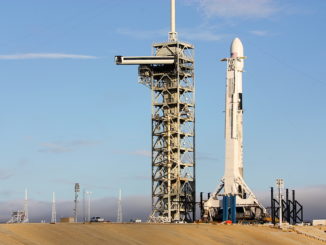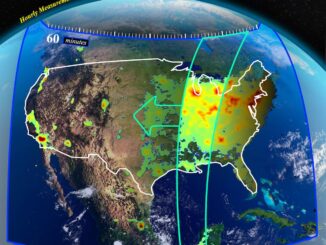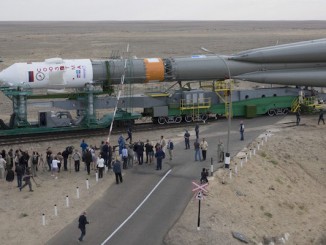STORY WRITTEN FOR CBS NEWS & USED WITH PERMISSION
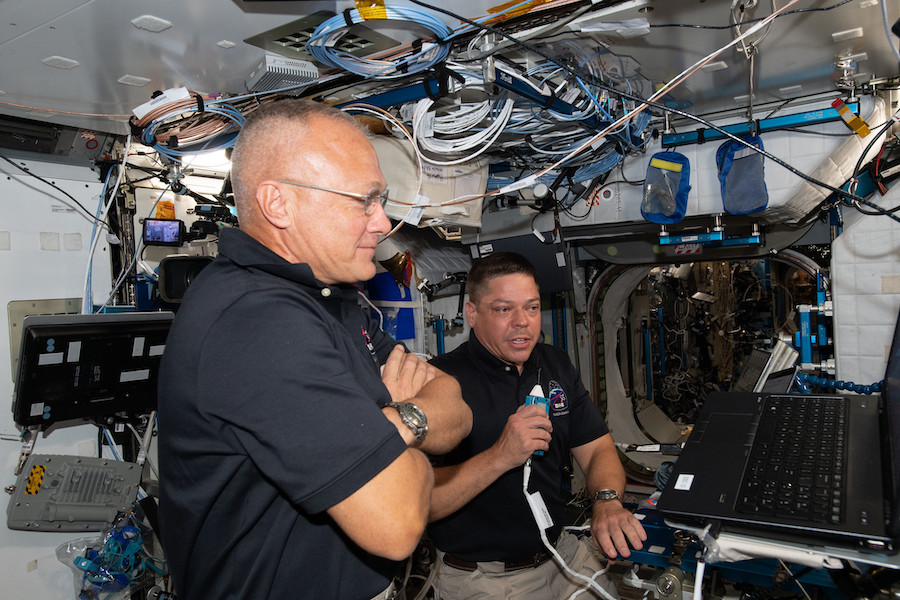
With Hurricane Isaias threatening Florida’s East Coast, astronauts Douglas Hurley and Robert Behnken are awaiting a go-ahead on plans to undock from the International Space Station Saturday, setting up a fiery plunge to splashdown Sunday, presumably in the Gulf of Mexico, to close out a 64-day flight.
Given the track of the hurricane, a splashdown in the Atlantic Ocean at one of three approved sites off Florida’s east coast is effectively ruled out, focusing landing plans on the Gulf where four sites are available off Panama City, Pensacola, Tallahassee and Tampa.
Assuming NASA and SpaceX press ahead, a final decision on prime and backup landing sites is not expected until Saturday, based on the latest forecasts and assessments of the Crew Dragon’s health. The preferred splashdown zone is just south of Panama City.
“We look forward to the weather forecasts that are coming out daily at this point, and they’ll even get more frequent as we get closer to the actual splashdown,” Behnken told reporters in an orbital news conference Friday.
“We have confidence that the teams on the ground are, of course, watching that much more closely than we are, and we won’t leave the space station without some good splashdown weather in front of us.”
The Crew Dragon spacecraft is certified for around 114 days in space and if the weather or some other problem crops up that might rule out undocking for a Sunday landing, “we know we can stay up here longer,” Behnken said. “There’s more chow, and I know the space station program’s got more work that we can do for the folks that have sent science up here to the space station.”
Said Hurley: “We have some of the best people in the business working on this for us and if the weather is not good, we won’t try to leave tomorrow, we’ll leave on a different day when it is.”
But assuming the weather cooperates and no technical issues crop up, Behnken and Hurley would undock from the station’s forward port around 7:30 p.m. EDT Saturday, spend the night aboard the Crew Dragon and then fire their braking rockets around 1:50 p.m. EDT Sunday for a splashdown in the Gulf around 2:42 p.m. EDT.
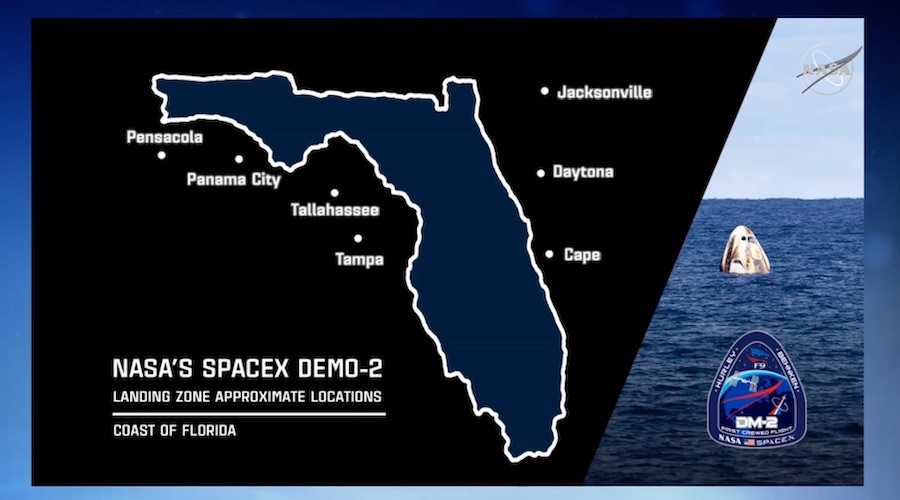
A SpaceX recovery ship, staffed by engineers, medical personnel and fast-response support crews with jet skis and other gear, will be stationed nearby to recover the capsule, pull it on board, help the crew get out and render any medical assistance that might be necessary.
It will be NASA’s first ocean splashdown in 45 years and the first piloted re-entry of a Crew Dragon capsule. But Hurley and Behnken, both space shuttle veterans and former test pilots, said Friday they are confident the SpaceX capsule will bring them safely back to Earth.
That said, bobbing about in the sea awaiting recovery while re-adjusting to gravity after an extended stay in weightlessness raises the prospect of post-splashdown nausea and seasickness.
“One effect of (a long-duration stay in) space … is you’re very conditioned to microgravity, and you’re not so conditioned to gravity,” Hurley told James Corden, host of the CBS Late Late Show, in an earlier interview. “And then your vestibular system, your inner ears, play tricks with you.
“As you can imagine, even if you decided to go deep sea fishing one day, and you’ve lived on Earth your whole life, people get seasick. We’re going to do it from space and end up in the water. So there’s a pretty good likelihood that we may see breakfast twice on that particular day.”
Just in case, Hurley said Friday, “there are bags if (we) need them and we’ll have those handy, we’ll probably have some towels handy as well.”
“The ground teams are fully aware of the challenges of the water landing and what it does to the human body,” Hurley said. “We’ve got the the flight surgeons on board that will be able to help us as well. So all those things are in place and other than that, it’s just time to go give it a give it a try and and see how it goes.
The Crew Dragon was designed and built by SpaceX under contracts with NASA’s Commercial Crew Program, an initiative aimed at ending the agency’s sole reliance on Russian Soyuz ferry ships for transportation to and from the space station.
A successful unpiloted test flight was carried out last year, helping clear the way for Hurley and Behnken to blast off atop a SpaceX Falcon 9 rocket May 30, the first orbital launch of astronauts aboard an American spacecraft from U.S. soil since the shuttle program’s final flight.
NASA managers say the Crew Dragon has chalked up a near flawless flight, setting the stage for re-entry and splashdown.
“We’re really excited to see our families,” Behnken said. “My son is six years old, and I can tell from the videos that I get, talking to him on the phone, that he’s changed a lot, even in the couple of months that we’ve been up here. And so that’s the thing I’m most looking forward to, seeing my family, my wife and my son.”
Hurley and Behnken are both married to astronauts. Hurley’s wife, Karen Nyberg, is retired from the astronaut corps, but Behnken’s wife, Megan McArthur, is in training for launch to the space station aboard her husband’s Crew Dragon next year.

